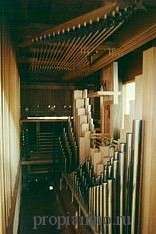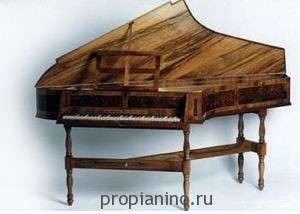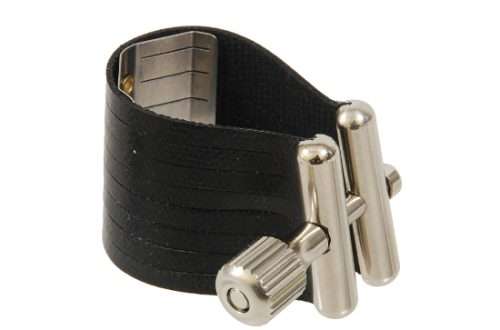
Organ (part 3): varieties of tractures
Contents
 Varieties of organ playing tractures:
Varieties of organ playing tractures:
Mechanical
- This type of tracture is most common today and is the reference.
- Thanks to its versatility, it is possible to perform almost any work on an instrument with a mechanical tracture, regardless of the era of its composition. In addition, only on an instrument with a mechanical tracture is it possible for a musician to achieve the highest playing technique.
- The sound of the organ is also much more precisely controlled. But due to the fact that all efforts are transferred to the pipes only with the help of the musician’s muscular strength, rather rigid limits arise that limit the size and power of the instrument.
- In the largest organs (those with more than a hundred registers), mechanical traction is either not used at all, or is used together with a special Barker pneumatic amplifier.
Pneumatic
- Most often, such a tractura can be found in instruments created in the period from the end of the nineteenth to the beginning of the twenties of the twentieth century.
- In such a tract, when the musician presses the key, the pneumatic valve of the control air duct opens. He, in turn, opens the air supply in one or in a number of pipes of the same tone.
- On the one hand, this instrument is good, since the pneumatic tracture removes all restrictions on the size of the organ and the number of its registers, and on the other hand, it has a delay in sounding.
- Owners of not very productive computers are familiar with this phenomenon when they play through it on a midi keyboard. Such a phenomenon at first can be too distracting from the game.
Mixed tractor
- Most often, mechanical and pneumatic tractures are combined. This type of tractor has all the disadvantages of both tractors, so it was used only until sufficiently reliable electric tractors were developed.
Electropneumatic tractor
- Now it is extremely rare to produce organs with such a control mechanism.
- In fact, this is a variant of pneumatic tracture, but with electrical signal transmission instead of air ducts.
electric tractor
- Pipe valves are opened and closed by means of control relays.
- Such organs were quite widespread in the twentieth century, but they are now increasingly being replaced by mechanical tracture.
- The electric tract is the only one that has no restrictions either on the number of registers or on their location in the hall. As a result, it even turned out that the registers can be located at different ends of the hall, additional manuals can be installed and a duet can be played, or even orchestral works.
- It even went so far that it became possible to record a part and play it back without the participation of a musician. A kind of multi-ton hurdy-gurdy.
- But such a tracture had a very significant drawback: the lack of feedback between the pipes’ valves and the musician’s fingers. Yes, and relays can work with a delay, and this is a more serious drawback.
- To eliminate it, in the first half of the twentieth century, electromechanical switches were sometimes used, and when they were triggered, they gave a metallic click. But if the overtones of a mechanical tracture sound quite melodious, the overtones of an electromechanical drive rather spoil the overall impression of the game.
Electromechanical tractor
- It is now the most common tracture for large instruments.
- On the one hand, the control and dynamics inherent in organs with a mechanical tracture are retained, and on the other hand, the electrical control of the pipe registers is much more convenient.
Now, as before, the organ is most often used for musical accompaniment during worship, as well as for accompanying the choir. In addition, it is used to perform organ parts and improvise during concerts.
Most often, such a tractura can be found in instruments created in the period from the end of the nineteenth to the beginning of the twenties of the twentieth century.
In the video below: recording of a live organ performance of T.D.’s Adagio. Albinoni June 4, 2006 at the Palace of Arts in Budapest:
ALBINONI: ADAGIO - XAVER VARNUS' HISTORIC INAUGURAL ORGAN RECITAL IN THE PALACE OF ARTS OF BUDAPEST





